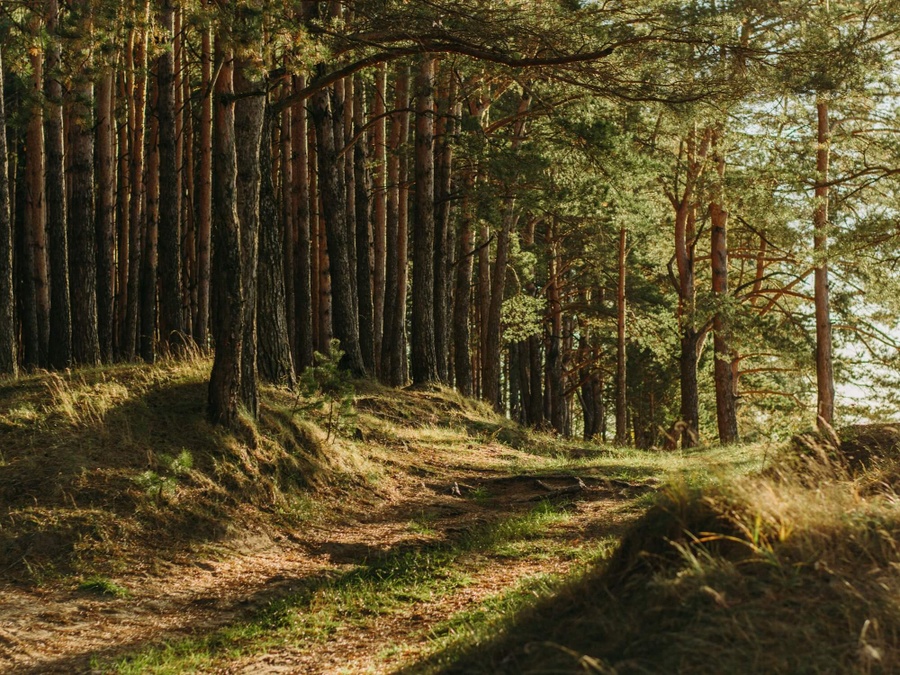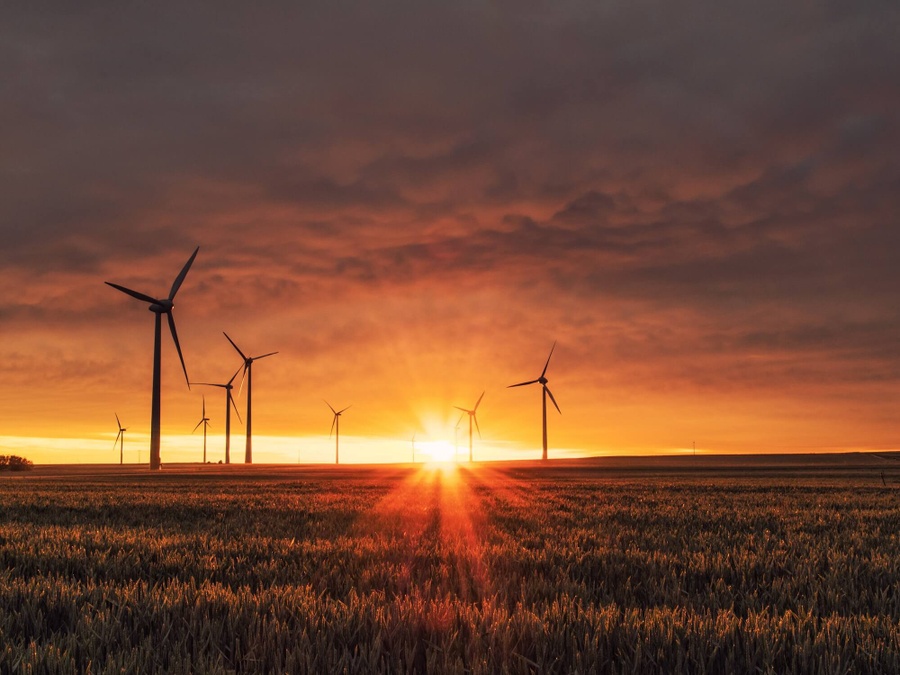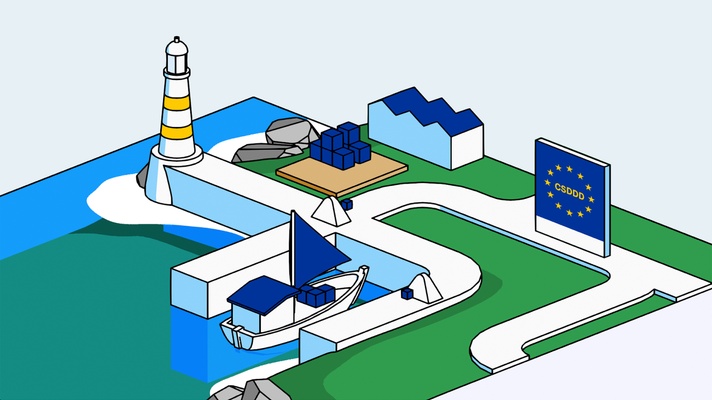The guide to climate solutions


- Author
- Lola DamskiWriter
- Category
- Climate Essentials
- Topics
- CarbonMeasureReduceContribute
- Published
- 19 May 2021
Here’s the good news. There are things we can do to stop climate breakdown, through the magic of technology or the genius of nature. Here's our (non-exhaustive) round-up of climate solutions.
This is an exciting part of the climate change journey – the solutions that reduce and remove CO2 emissions from the atmosphere, either naturally or artificially. And that could help save us from climate breakdown.
From restoring wetlands and forests to developing renewable energy sources, there are countless innovations, actions and initiatives going on around the world, and more being invented as we speak. Many of them are simple and nature-based – reforestation projects, for example. Others rely on cutting-edge, emerging technology. Either way, most of the solutions to the climate challenge already exist. They just need to be implemented.
Many of them have other benefits too, providing livelihoods, boosting economies and protecting wildlife, and some of them are creating the industries and business models and jobs of the future. All of them give us reason to be optimistic.
For a reminder on emissions and how they contribute to climate change, read our 101 of Climate Change here.
How do the solutions fit into the climate puzzle?
To avoid the worst effects of climate change, we need to limit global temperature rises to well below 2℃ above pre-industrial levels. To do that, scientists agree that we need to reach global net zero emissions by the middle of this century. (Net zero is when the amount of greenhouse gas being poured into the atmosphere is equal to that being taken out. You can read more about that in our 101 on climate change.
If we have any chance of reaching that target, the most important thing we can do is drastically cut down on the emissions we produce. But that’s not enough. We also need to stop destroying the planet’s carbon sinks – the forests and soils and grasslands that naturally absorb greenhouse gases from the atmosphere. And we need to pull CO2 out of the atmosphere, too.
So, while investing in climate solutions is no substitute for directly reducing your own emissions, they are a crucial part of the net-zero equation.
Which should we invest in?
There are, broadly speaking, two types of climate solution: removal and reduction (although some might fall into both, depending on how it’s executed. And reduction also includes avoidance - for example, protecting forest that would otherwise be cut down). Some solutions are old as the hills, quite literally, and some are still early-stage and unproven. Which should we be investing in? The answer is all of them.
When it comes to investing, we need a portfolio mindset. That’s because:
- No single solution can reduce or remove enough carbon from the atmosphere to solve climate change in the long run.
- We won’t reach global net zero without investing in both old and new removal and reduction solutions. Solely removal won’t cut it. Overall carbon-storage capacity on our planet is limited, and some of the removal might happen too late.
The business case
If your business wants to manage and reduce its carbon footprint, climate solutions can be a key part of the strategy. Once you’ve worked out where your emissions are coming from and acted to reduce them, the next step is to contribute to a climate project. Whether it’s a maker of clean cookstoves in Africa or a reforestation programme in the Amazon, there are hundreds of projects out there that are helping to tackle climate change and that need funding. Find out how it works – and how to do it without falling into the greenwashing trap – in our climate programme guide.
What are the climate solutions?
1. Removal
Removal solutions are about, you guessed it, removing greenhouse gases from the atmosphere and storing it somewhere out of harm’s way. This can be done by natural carbon sinks, such as forests and wetlands, or through manmade, engineered sinks, such as direct air capture.

Forests 🌳
One of the simplest carbon storage methods around. Using good old photosynthesis, trees absorb CO2 from the air and store it as part of the plant itself. Forests do need space, which can put them at odds with the need for land to feed a growing population, and trees take a while to grow to their full carbon-storing potential. But it’s relatively cheap and can improve soil and water quality and limit erosion, desertification and risks of wildfires.
Examples:
- Reforestation: Replanting forests that have been destroyed, either by wildfires or by humans clearing them for plantations, mining or other development.
- Afforestation: Planting forests where there weren’t any before.
Water 💦
Water ecosystems such as seagrass, algae, mangroves or peatlands can be even better than forests at absorbing CO2. They not only trap CO2 but they also retain organic matter in roots or stagnating water, storing the carbon forever. And they offer a home to critters such as lizards and snakes, fish and marine mammals as well as helping prevent erosion. Preserving and restoring them is a pretty good investment all round.
Examples:
- Coastal ecosystems restoration: Restoring natural CO2 sinks, harnessing the CO2 absorption power of algae and lagunas.
- Peatland restoration: Restoring hybrid CO2 sinks in wetlands with peat soils.
Soils 🌱
Soil has an almost magical ability to absorb and store carbon. CO2 gets into the soil via decomposed roots, dead insects and little stones that have already captured carbon through a long chemical process. That carbon, in turn, makes the soil more fertile and more resistant to erosion and desertification. Dirt really can be gold.
Examples:
- Agroforestry: Basically, putting trees and agriculture together. It’s a beautiful, symbiotic relationship that leads to cleaner air, richer soils, less erosion and more wildlife. It was practised around the world before industrialised farming came along, and it could soon be coming to a field near you.
- Biochar: The result of burning biomass underground with limited O2 can be spread over soils to improve its fertility.
Biomass 🌱
Plants are great at capturing and storing CO2. Biomass solutions take this beyond just growing forests, by using them as a material to create new things. Think wooden houses, or a heating system using organic waste. Rather than create more emissions with new stuff, we remove them. Using land for biomass solutions, though, needs to be carefully thought through – we have to avoid deforestation, and to consider the competing needs of food producers.
Examples:
- Bio-energy with carbon capture and storage (BECCS): Burning sustainably grown plants or organic waste, then capturing the released CO2 and storing it in the ground.
- Biomass building materials: Using wood from sustainable forests or other organic material to build and construct buildings (that have a longer lifetime).
Direct air capture ⛰
While natural sinks are great, there aren’t enough of them and we can’t plant enough trees and restore enough soil in the time we have. Direct air capture is an artificial method of sucking the CO2 straight out of the atmosphere and either storing it or putting it to use. It’s the cutting-edge of climate solutions. It’s still mostly in the pilot stage – and it’s expensive. But the price should come down as it becomes more widely deployed.
Examples:
- Storing carbon underground: CO2 is drawn from the air, mixed with water then pumped deep underground, where it reacts with the rock and turns into stone. It can be stored in this way for thousands of years.
- Re-using carbon: Captured and compressed CO2 can be turned into products ranging from fertilizer to cement – or even precious gems (see below).
**Diamonds from the sky 💎**
Diamonds are basically crystalised carbon. Most natural diamonds were formed more than a billion years ago, 120 km under the earth’s surface, and extracting them can have a devastating effect on the environment. However, these days you can make diamonds in labs out of CO2 pulled from the air. It’s a process that takes months, or even days, but it uses an awful lot of energy and is incredibly emissions-intensive. Now some companies, such as UK-based Sky Diamonds, are trying to clean up this process by using only renewable energy and rainwater. If successful, then maybe diamonds can be one of the climate’s best friends.
Geoengineering 🌊
What if we could use natural methods to get rid of the greenhouse gases and accelerate and enhance them with technical wizardry? Well, this is what geoengineering is about. These solutions are still in their infancy and we don’t know about their risks yet – they could be game-changing or they might have catastrophic side effects. Watch this space.
Examples:
- Stratospheric aerosol injection: This involves spraying reflective particles high up in the atmosphere to reflect solar rays and keep the planet cool – in the same way as a volcanic eruption.
- Ocean fertilisation: Injecting nutrient iron into the ocean to stimulate the growth of phytoplankton, which is responsible for more than 50% of our oxygen.
- Enhanced weathering: Spreading pulverised rocks onto humid agricultural land or over the ocean surface. The idea is to accelerate the natural process in which CO2 dissolves in water. When it does, it becomes acidic and reacts with rocks, turning into bicarbonates that are washed down the ocean.
2. Reduction
To reduce, we improve how we already use resources. This idea might seem less sexy than some of the sci-fi-worthy, high-tech removal projects. But reduction is a priority. And it touches everything, from how we use energy to how we design products, and from dealing with waste to raising awareness. Here are just a few types of solutions aimed at reducing emissions at their source.

Energy 💡
The biggest chunk of the world’s CO2 emissions come from burning fossil fuels to generate energy. By switching our energy sources, using energy more efficiently and, of course, by consuming less of it, we can unlock massive emission reduction potential.
Examples:
- Renewables: Solar, wind and water – literally endless sources of energy and a solution that’s been around for decades. Recent-ish developments include concentrated solar power (CSP), which uses the sun’s rays to heat liquid and power steam turbines.
- Energy storage: The trouble with solar and wind power is that the supply is unpredictable, so the race is on to create cheap, safe energy storage solutions, such as batteries, that can be used at scale.
- Landfill gas to energy: Decomposing municipal waste produces methane – a particularly nasty greenhouse gas. If you capture that methane and use it to generate electricity, you’ve got a cheap source of energy – and less methane hanging around in the atmosphere.
Industry 🔥
Industry is another big emissions source. And another area where reduction potential is huge, from using low-carbon raw materials to closing the production loop with zero-waste models.
Examples:
- Raw materials: Producing raw materials creates lots of emissions. Cement, for example, is made by mixing limestone and clay and ‘cooking’ it in a kiln, a process that emits large amounts of carbon dioxide as a waste product. Using alternative materials could cut those emissions dramatically.
- Industrial symbiosis network: Put simply, this is when networks of businesses collaborate and exchange resources – energy, materials, water or heat. The waste heat that a glass manufacturer generates, say, is piped into greenhouses and used for food production. It reduces both emissions and costs, and everyone’s a winner.
- Recycling: Designing products that are easily repairable/reusable or recyclable. And then making raw materials out of recycled stuff – old plastic bottles, for example, can become PET flakes and granules, which are used in everything from packaging to carpets.
Building 🏗
Buildings are responsible for about 18% of total global CO2e emissions. Two thirds of that comes from using the building (you’ll know that from your energy bills). And the rest comes from the construction itself. As populations grow and more buildings are built, the need for sustainable solutions will only become greater.
Examples:
- Energy consumption: Monitoring electricity consumption, heating, water usage and waste with smart sensors. Using clean energy to power our buildings is also key, as well as harnessing ‘passive’ techniques that can be as simple as having windows that open and roofs that reflect the sun’s warmth.
- Natural building materials: Concrete, cement and steel are emissions-intensive, and that’s a problem. Building with natural materials such as wood means you not only avoid the emissions from making the material but the wood stores carbon, too. And the longer you use it, the longer it’s stored.
- Material banks: This involves creating a database of every brick, every tile, every product and material that goes into a building so that it can be easily recovered and re-used when the building is demolished.
Agriculture and land use 🚜
The potential of agriculture and land use solutions is twofold. Not only can we improve efficiency, reduce waste and decarbonise most processes but we can also leverage nature's own ability to absorb CO2 by regenerating ecosystems and reducing the need to convert more land in the first place.
Examples
Conservation agriculture: This involves more planet-friendly farming practices such as crop rotation, less tilling and not using nitrogen fertiliser. Nitrous oxide (N20), which is released by crops that have been fertilised with nitrogen, is 300 times more potent than CO2 and can't be absorbed by carbon sinks.
Plant-based diets: Meat is murder for the environment. Livestock produces a lot of methane emissions (those pesky burping cows), so we need to be producing less meat and more plant-based food.
Transport 🚝
Approximately 15% of all our emissions come from transportation – both of ourselves and our goods. From optimised freight routes to creating bike lanes, and from connected trucks to smart public transport, the solutions are abundant.
Examples:
- Logistics and route optimisation: Crunch the data to design routes and modes of transport that are the most cost effective and least emission-intensive.
- Railroad improvement and development: Replace short-haul flights and car journeys with less-polluting train trips.
- Electric cars: Ditch the diesel and petrol.
- Green mobility at the core of city planning: Make cities cleaner, safer and healthier with plenty of bike lanes and bike-parking and better public transport.
- Local economy: Reduce freight-related emissions by reinvesting in local manufacturing.
Conservation 🌲
Natural carbon sinks have been doing their job of absorbing and storing CO2 since well before we evolved into homo sapiens. And if we protect and conserve them, they will continue to do so virtually forever. Land use change, where humans have transformed the earth’s land surface by, for example, destroying rainforests, accounts for around 20% of global GHG emissions, and we need to bring this to zero.
Examples:
- Forest protection: Protecting forests from wildfires and deforestation is crucial. The Brazilian rainforest released nearly 20% more CO2 into the atmosphere over the past decade than it absorbed, largely because so much of it has been cleared and burnt to make way for logging, farming and mining. Projects to stop that happening are vital (see box below).
- Wildlife protection: Protecting wildlife also protects habitats, and healthy animal populations are crucial to a healthy environment. Sharks, for example, help maintain species diversity in the ocean. This in turn allows algae, plankton and kelp to grow – and they all happen to be great at absorbing CO2.
Indigenous people power
Indigenous people are exceptionally good at protecting their territories. In Latin America, a UN report found that deforestation rates are up to 50% lower in their territories than elsewhere. There are numerous climate projects, such as this one in Peru, that help indigenous people to sustainably manage and protect their land, saving millions of tonnes of CO2 emissions and providing a livelihood for thousands of people.
Community 🏡
Perhaps the biggest one of all: changing people’s attitudes and behaviour. It’s time to pass it on and tell everyone about the importance of reducing our emissions and creating a better future. After all, this is an all-hands-on deck situation. There are loads of smart, creative solutions out there and we’re only limited by our imagination.
Examples:
- Awareness programmes: Educating children or adults about the importance of reducing emissions, with games and other incentives to track and reduce at-home consumption.
- Community gardening and composting: Kickstarting urban farms on rooftops or other under-used spaces, shared by the community.
Conclusion
Phew. That’s quite a list, and we’ve only covered some of the solutions out there. But hopefully it’s given you a taste of what’s possible and made you excited about the positive things we can do.
Of course, there’s a lot we don’t know yet. We don’t know which solutions will pull ahead and which will be slow to take off, or whether some innovations will have negative side effects.
What we do know is that we have all the tools we’ll need to get there. We just need to start using them wisely.
Find out how businesses can contribute to climate solutions in our guide to running a climate programme . And take a look at the projects in ourCatalogue , all of which are working to tackle climate change.
Further reading
Project Drawdown
If you want to know anything about climate solutions, then Project Drawdown is your go-to. It’s a non-profit organisation whose stated aim is to help the world reach “Drawdown”, the point in time when levels of greenhouse gases in the atmosphere stop climbing and start to decline. The project does this by hunting down, reviewing and analysing the myriad climate solutions around today. Check it out here.
More stories
Track, report and act
Sweep helps you get your carbon on-track
Sign up to The Cleanup, our monthly climate newsletter


© Sweep 2024


